Art Work From the Original Harry Potter Book Each Chapter
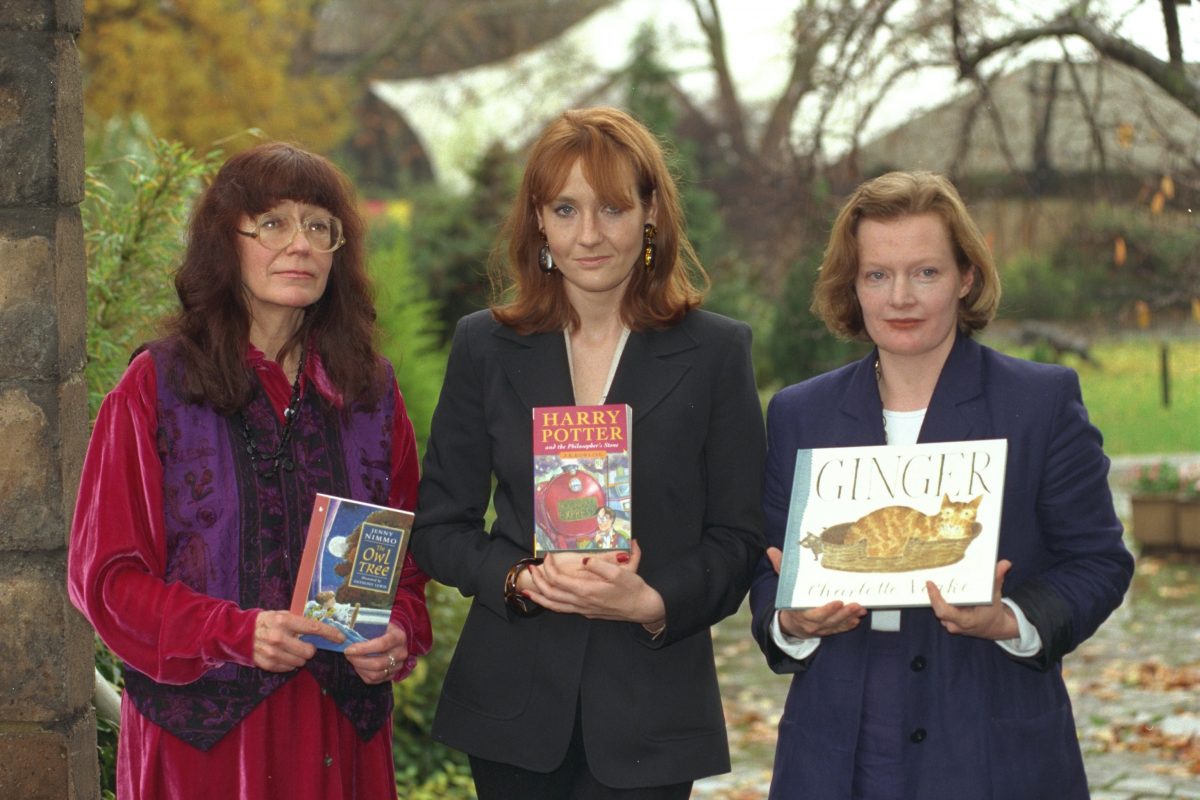
They might be giants: Authors Of new Childrens Books From Left To Right Jenny Nimmo, Joanne Rowling (J.K. Rowling) And Charlotte Voake -18 Nov 1997
In 1997 Bloomsbury took a punt on first-fourth dimension novelist Joanne Rowling, publishing 500 hard back copies (yours then for £x.95) and 5,150 paperbacks (£iv.99) of her 1995 children's volume Harry Potter and the Philosopher'south Stone. Recast as J.K. Rowling (boys eschew women writers, apparently), over 500 meg copies of the wizard's adventures have been sold. Those original books fetch thousands at auction – their offset-issue price dwarfed by Dumbledore's robes, which yous can snap ip for £495.95 on the Harry Potter tour.
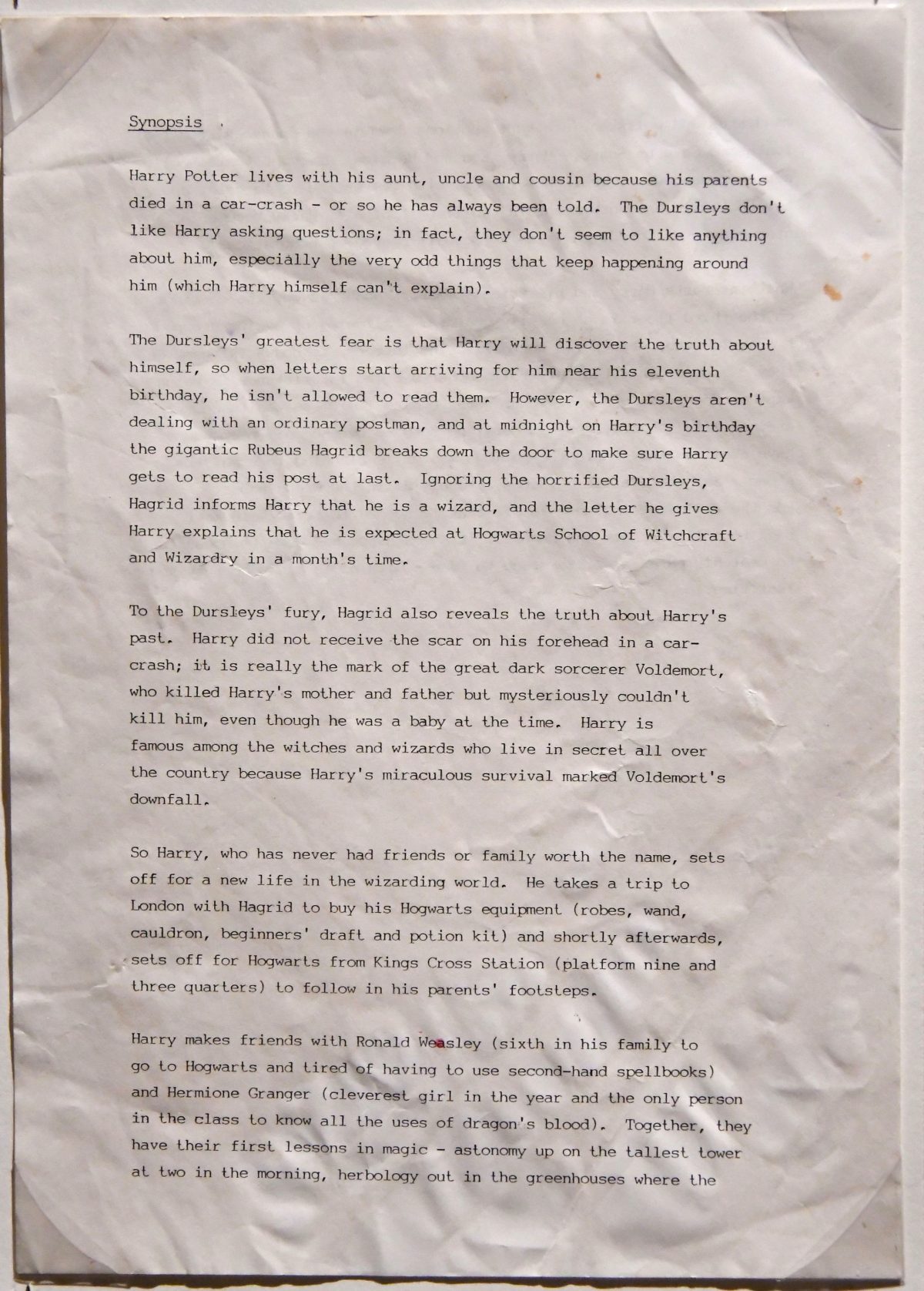
J.M. Rowling's original synopsis of kickoff Harry Potter volume, The Philosopher'due south Rock
"I don't remember everyone should believe in magic," says Rowling, "but I'm non sure I would trust anyone who doesn't." What of the magic that comes through difficult piece of work and enjoyment in what you do? Writing books to deadline amid soaring expectations, words feeding an industry constructed on Harry and his pals, is non like shooting fish in a barrel. You need to get a thrill from watching your ideas cascade onto the page, immersing yourself in the impulsive rush of magical reality and creative catamenia as the book comes live. Rowling creates characters of depth that stick in the listen. Things shift equally the book appears. But plotting matters, not least of it all because it allows the writer to change their heed; a recognition that the author volition one day get the reader. And it's not left to chance. Many writers have an ending in mind as they begin a novel – Rowling had an idea for vii books when she waited for a delayed railroad train in 1990.
Below is the handwritten plot spreadsheet she used to write the fifth Harry Potter novel,Harry Potter and the Order of the Phoenix. It features a map of capacity in chapters 13-24:
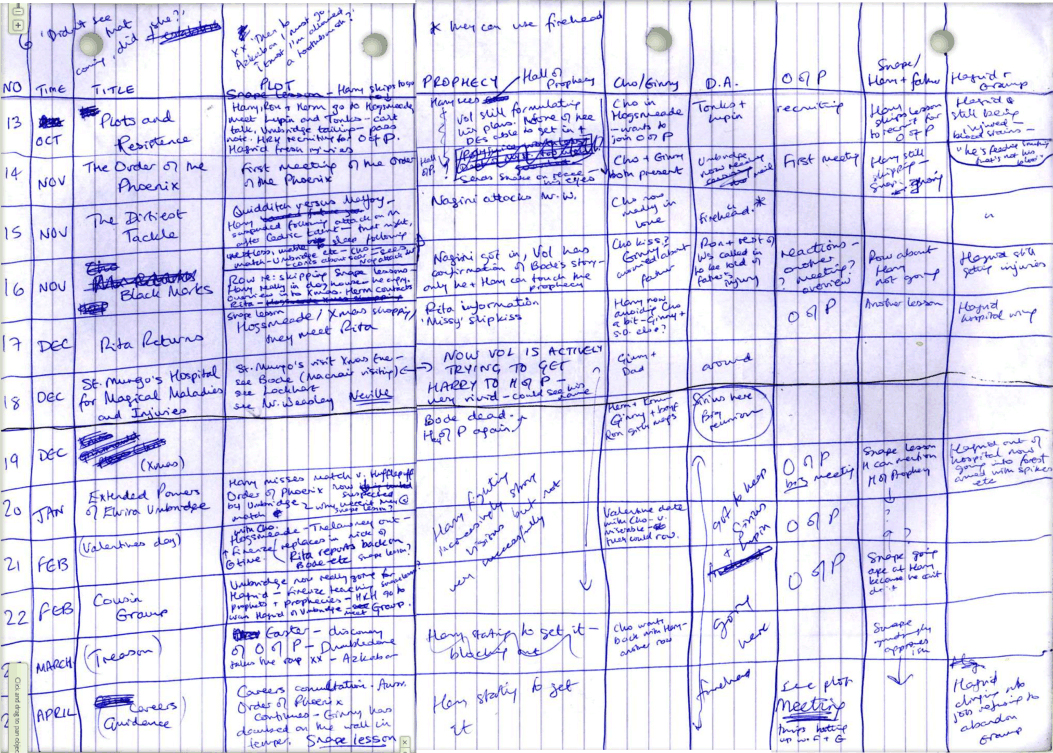
J.Grand. Rowling plot outline for the offset Harry Potter book (via)
EndPaper takes a look (via):
The outline is made up of 10 columns. The beginning 4 map the chapter's broader details: the championship, the month, the plot, etc.:
"No": The specific chapter number
"Time": The calendar month of the school year that the affiliate is set in
"Title": The championship of the affiliate
"Plot": An outline of the affiliate's plot
And Rowling uses the final 6 columns to keep track of the story'southward various subplots and characters:"Prophecy": A subplot about the prophecy Harry finds himself concerned most all through the book
"Cho/Ginny": The book's romantic subplot
"D.A.": What's happening with the resistance ground forces, or "Dumbledore'south Ground forces"
"O of P": What's happening with the "Order of the Phoenix" grouping
"Snape/Harry": What's happening with Snape and Harry
"Hagrid and Grawp": What'south happening with Hagrid and Grawp
Rowling visualised her creations in sketches. Her drawing of Professor Sprout, the herbology teacher at Hogwarts Schoolhouse of Witchcraft and Wizardry, was made the night her female parent Anne died. As she recalls:
"I drew this picture on December 30, 1990, and I tin can be very precise . . . I was staying at a friend'south business firm and I had been writing Potter for half-dozen months and I stayed up when anybody else had gone to bed because I was watching the film, The Human being Who Would Exist Rex. The reason I can be incredibly precise about when I drew this was because at some signal during watching that movie and cartoon this moving picture, my mother died, 250 miles away, and I got the telephone call the next mean solar day to say that she had died."
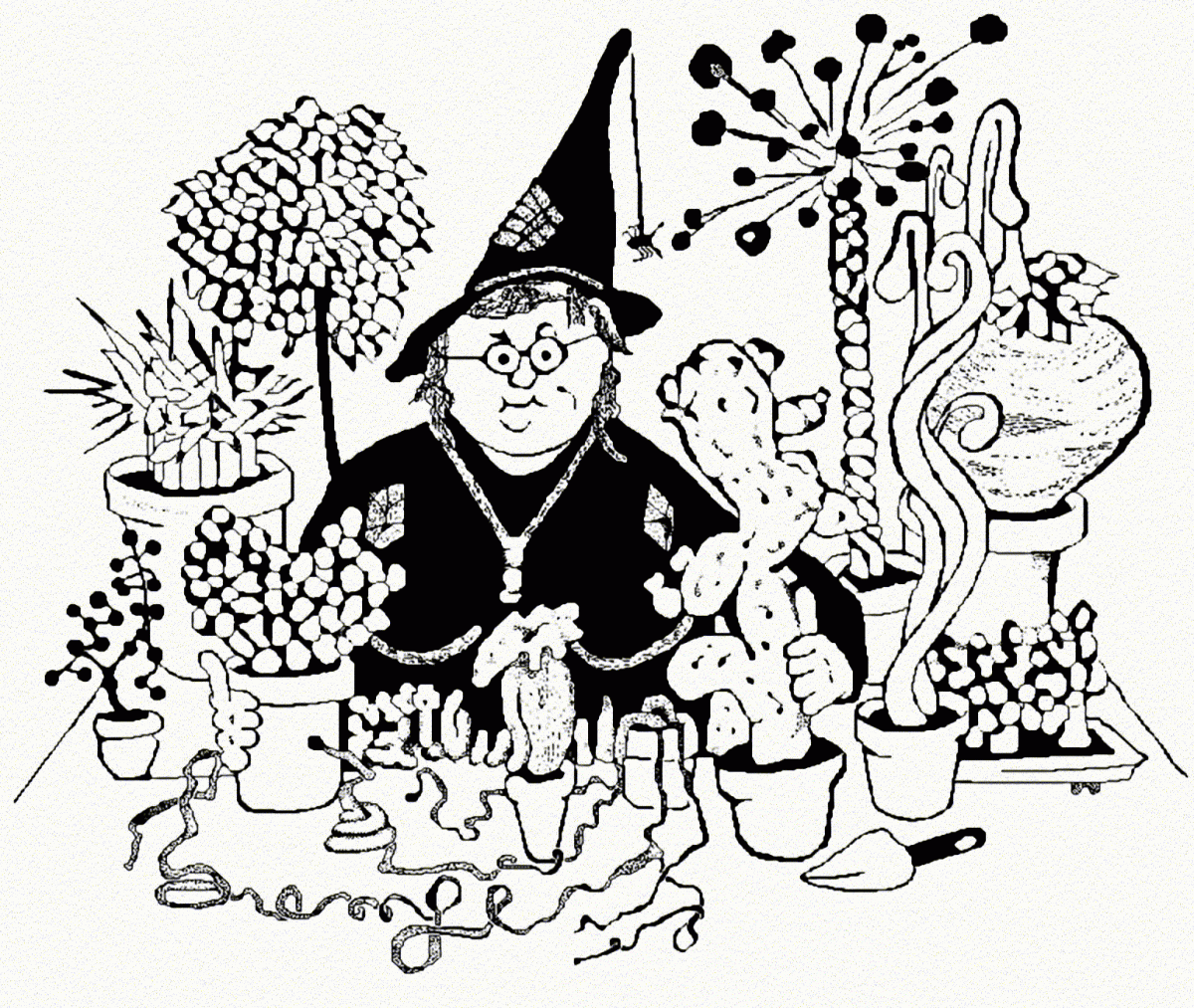
JK Rowling draws Professor Sprout (via)
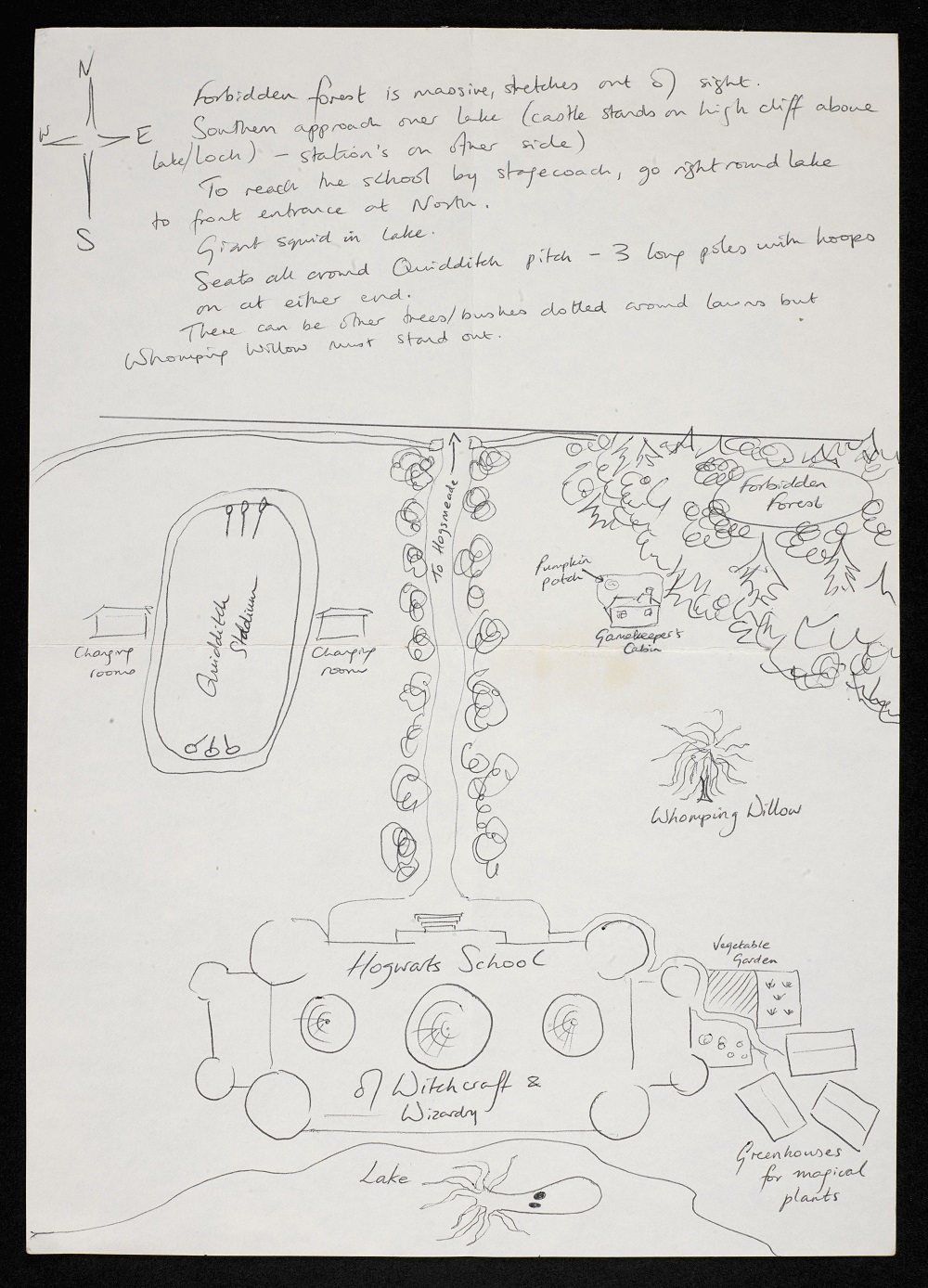
JK Rowling's mitt drawn map of Hogwarts (via)
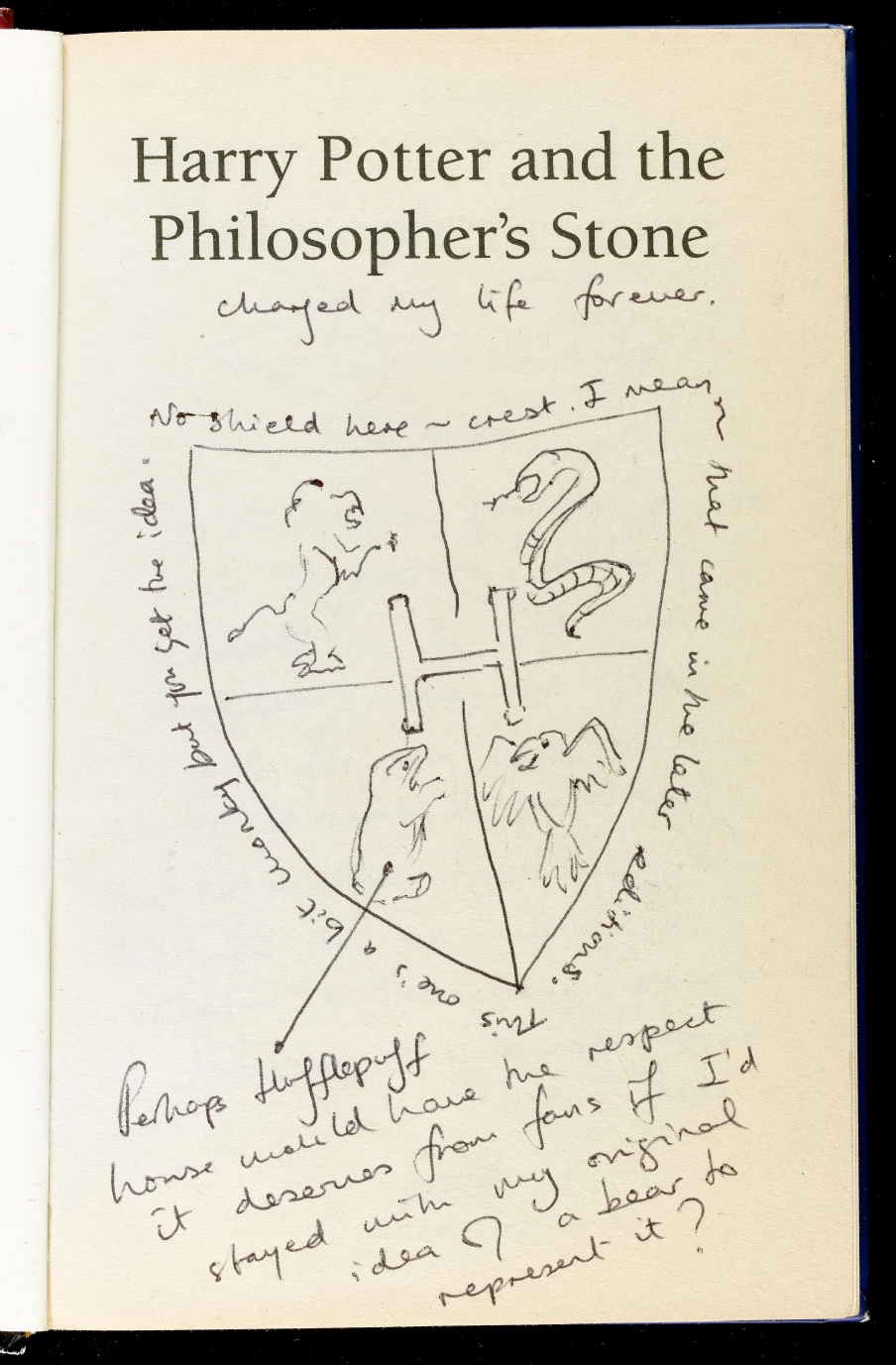
'A beginning edition copy of Harry Potter and the Philosopher's Stone, including notes and sketches by its author J.K Rowling was sold at an auction in London for the total sum of £150,000' (via and below)
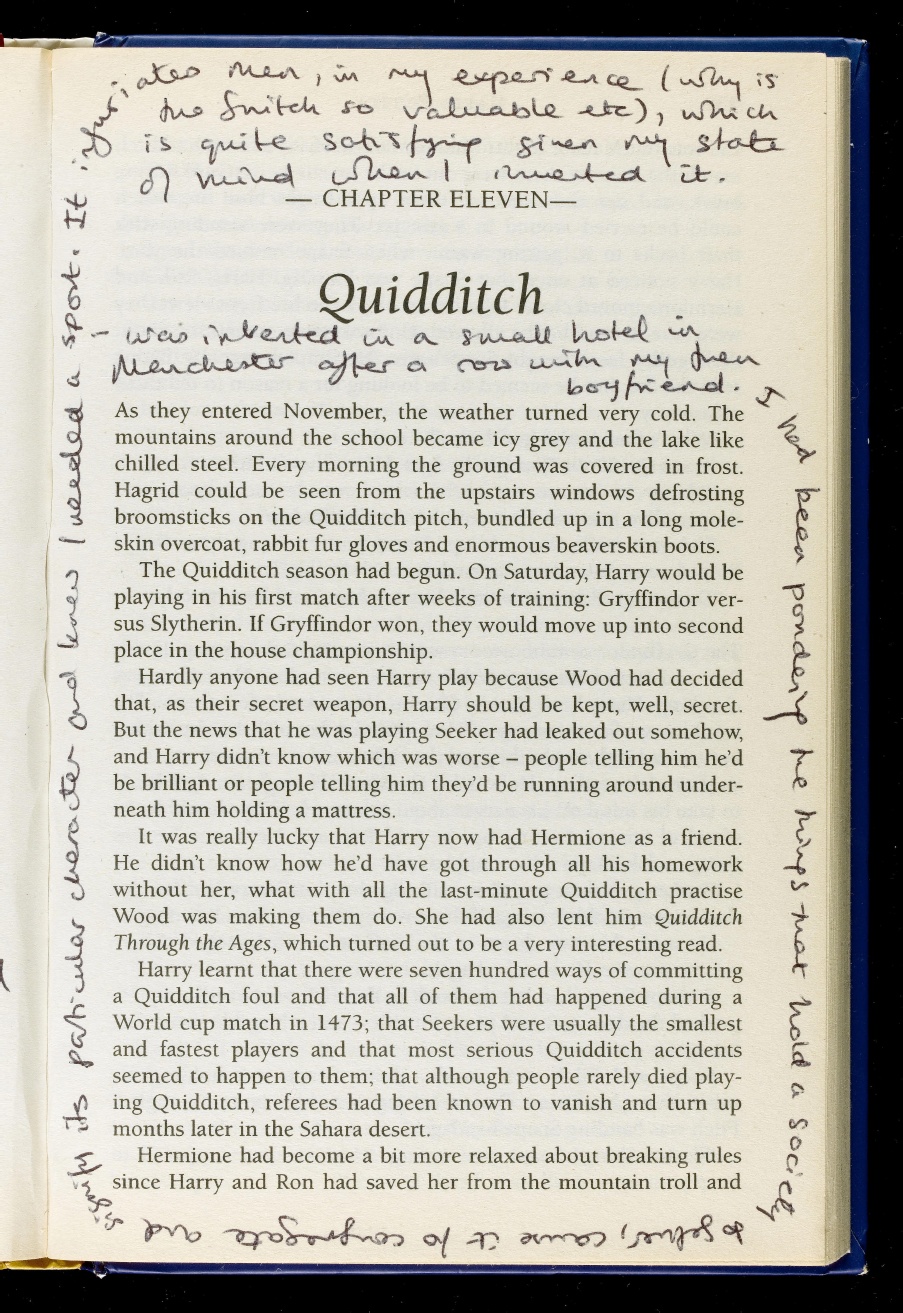
Quidditch, writes Rowling, "was invented in a small hotel in Manchester subsequently a row with my then fellow.
"I had been pondering the things that hold a social club together, cause it to congregate and signify its particular character and knew I needed a sport."
The broomstick-based pursuit, she continues, "infuriates men… which is quite satisfying given my state of mind when I invented it."
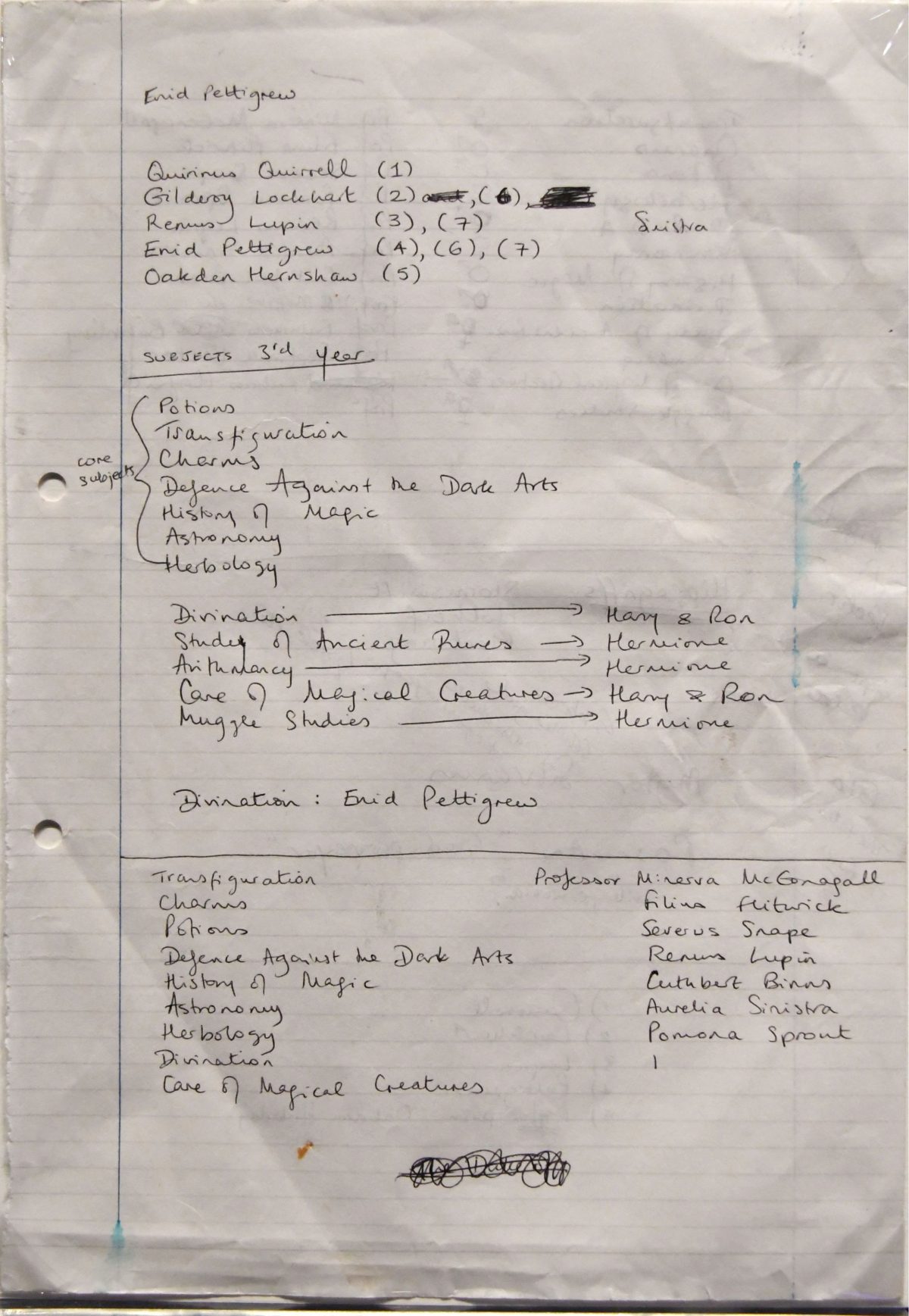
J.K. Rowling'southward notes of list of Hogwarts' Subjects and Teachers
Source: https://flashbak.com/jkrowling-sketches-harry-potter-plot-spreadsheet-400969/
0 Response to "Art Work From the Original Harry Potter Book Each Chapter"
Post a Comment